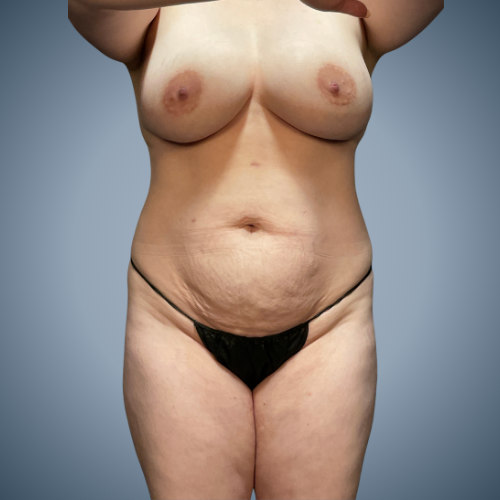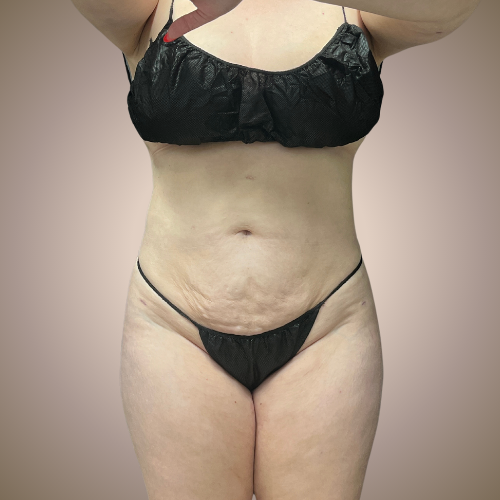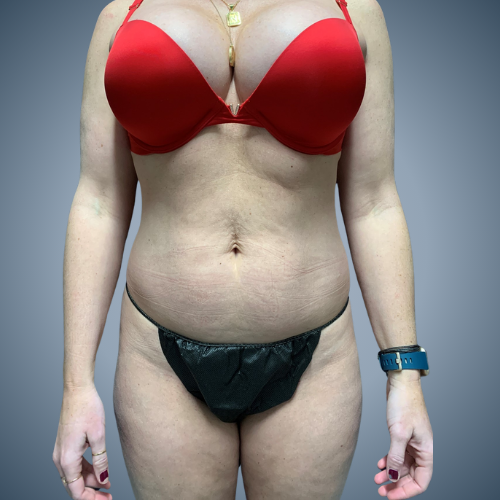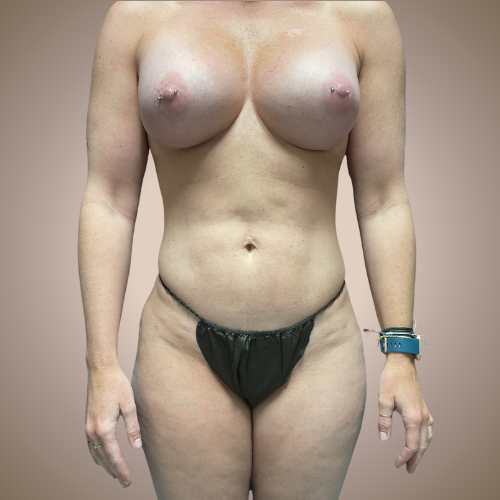Liposuction is a popular cosmetic surgery aimed at sculpting the body by permanently removing stubborn fat deposits. It is ideal for areas that are resistant to diet and exercise, including the hips, thighs, abdomen, knees, ankles, face, and neck. This procedure is most effective for those with good skin tone and is not intended as a solution for weight loss but rather as a method for refining and contouring specific body parts.
At our office, liposuction is typically performed under general anesthesia as an outpatient procedure in our AAAASF certified surgical suite. Dr. Petersen makes small, discreet incisions and uses a cannula to suction out the fat. The duration of the procedure depends on the number of areas being treated and can be combined with other surgeries like a tummy tuck for enhanced results. It’s important for patients to maintain a healthy lifestyle post-surgery to preserve the outcomes, as factors such as diet, exercise, and overall physical condition can influence the long-term success of the procedure.
What parts of the body can get liposuction?
The optimal area(s) for you depends on your unique response to exercise and diet. Common problem areas of the body where women want liposuction performed are:
- Chin and neck area – double chin removal
- Abdomen and Flanks – create curves and sculpted abs and remove love handles and muffin tops
- Breasts – remove “side boob” fat
- Hips – eliminate squareness
- Outer, anterior, and inner thighs – define thighs in proportion to knees and calves
- Knees – create runners’ knees
- Arms – sculpt and define for the appearance of toned and “cut” upper arms
- Back – removed dreaded back fat to soften and create a more feminine physique
Men tend to have liposuction performed most commonly on the chin and neck area, flanks (love handles), abdomen, and male breasts.
Is liposuction surgery safe?
Like all surgical procedures, there are some risks associated with each of the liposuction mentioned above. During your consultation, your surgeon will be able to fully layout any risks for the type of liposuction you choose.
Generally speaking, however, liposuction is considered a safe procedure, and if you follow your post-op instructions closely, there are rarely any serious complications.
Will I be in pain after the procedure?
Liposuction is a surgical procedure, so there will be some swelling, pain and discomfort in the first few days of your recovery. Most people report feeling post-op pain up to four or five days, but it subsides quickly, and any lingering discomfort can be managed easily.
Am I a good candidate for liposuction?
There are two layers of fat you need to understand before determining if you are a good candidate for liposuction: subcutaneous fat and visceral fat. Subcutaneous fat can be stubborn to lose, and it lies between muscle and skin. Visceral fat, on the other hand, is the layer beneath the muscle layer around organs. Visceral fat cannot be removed, but the subcutaneous layer can. The subcutaneous layer’s integrity, as well as your skin’s elasticity will help determine if you are a good candidate. An important consideration when evaluating whether liposuction is right for you is ensuring the skin envelope will not sag or look wrinkly with fat removed. This will be determined in your consultation.
Will there be scarring?
Because the modern cannula (microcannula) is a small instrument, scars are tiny or unnoticeable. Redness will coincide with how many insertion points are necessary for the procedure and will depend on the skin’s elasticity and this will fade over time. Dr. Petersen will discuss ideal locations for discrete insertion points and the best ways you can minimize redness and care for your skin after liposuction.

What is Recovery Like?
After the procedure, expect a fair amount of swelling and bruising in the two weeks following liposuction. Special garments that we provide must be worn preceding the cosmetic surgery. These garments will apply pressure to minimize swelling, provide support while healing, and assist in the reaction of the skin. These garments should be worn for up to six weeks.
Results may be noticeable almost immediately and as swelling subsides, the results will continue to improve. We encourage you to be up and walking soon after surgery. Increase your activity daily until full activity is resumed at 2-4 weeks. You will be ready to return to office work in 2-5 days or for more active employment, 10-14 days. Avoid the sun until all bruising has subsided. Sunscreen should be used routinely because it’s easy to get sunburned during recovery due to decreased sensation.
What are the Possible Complications?
As with any cosmetic surgical procedure, complications can occur. Cosmetic surgery complications include contour irregularities, skin discoloration, asymmetry, scar tissue, tape burns, collection of blood or fluid under the skin. Uncommon complications include loss of sensation, skin breakdown, fat embolism, serious infection or shock. Bleeding does occur during liposuction. There is a limit to the amount of fat that can be safely removed in a given procedure. These complications are not common and can be addressed.
Following liposuction, the scars will go through a maturation process. During the first 8-12 weeks, they may be red and possibly raised. The scars will mature over 12 months and become pale, flat and soft. You may experience numbness, burning, tingling around the incision site, but these symptoms are almost always temporary. Please let us know if you are prone to keloid scars.
Before and After



